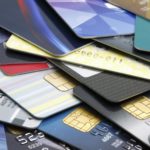Seven practical tips for secure online shopping
Internet shopping is more and more common: grocery shopping, movie tickets, airline travel, and more. Shopping online has become habitual day-to-day practice, though occasionally potential buyers leave themselves open to fraud or data theft. The following cybersecurity tips serve to reduce the risks associated with card payments on the Internet.

When making online payments, Internet users may subject themselves to a variety of risks, which could result in the unsettling discovery of unanticipated charges on one's credit card. Following these simple tips can help prevent this misfortune.
1. Use virtual cards
Banking applications typically allow you to sign up for virtual cards. These are cards that don't exist physically and are exclusively used to make online payments. If this option isn't available to you, you can always get a normal credit or debit card and use it solely for this purpose.
This way, you avoid entering information online related to your other cards, keeping them safe from being compromised on the Internet.
2. Use a prepaid card, keeping the balance low
If you have decided to use one card exclusively for Internet shopping, it is a good idea to use a prepaid card, only re-loading it with the amount you need when you need it. It is also advisable to keep the balance of the card low, instead of linking it to your main account. In the worst-case scenario, this will prevent online fraudsters from making off with large sums of money if they have gotten their hands on your data.
3. Don't store payment data online
Some ecommerce sites offer the option to save payment information in order to facilitate future purchases. But you can't always rely on Internet vendors to take the appropriate measures to safeguard their customer data. It is therefore recommended that you enter your data each time you make a purchase.
If you frequently make purchases from the same business and it's too onerous to repeatedly enter your payment details, the previous piece of advice applies: keep the balance low, adding money to it as and when needed.
4. Use the option to turn your card on and off
Many banking applications also provide functionality that allows cards to be “turned on or off.” Payment cards can be enabled just before shopping and disabled until the next purchase.
5. Restrict the card’s functionality
Best practice recommends that you correctly configure each card according to how each one will be used. In the BBVA application it is possible to limit how the card will be used according to specific cases; for example, if the card won’t be used to make payments online, make payments in person, withdraw money from ATMs, or used to make contactless payments.
6. Configure security notifications
By keeping safety alerts activated you will know when your cards are being used; you’ll be notified in real time and can rapidly determine if unauthorized transactions are being made.
7. And finally, regarding the physical card...
- Never let it out of sight, and when you are asked for it to pay, always be sure to keep the card in your hands, making the payment yourself. Be wary if a vendor asks to handle the card for you.
- Don't share card details with anyone, and don't write your PIN or security code anywhere.
With these suggestions, cards can be kept safe from the pitfalls on the Internet, and shopping can be done with peace of mind.